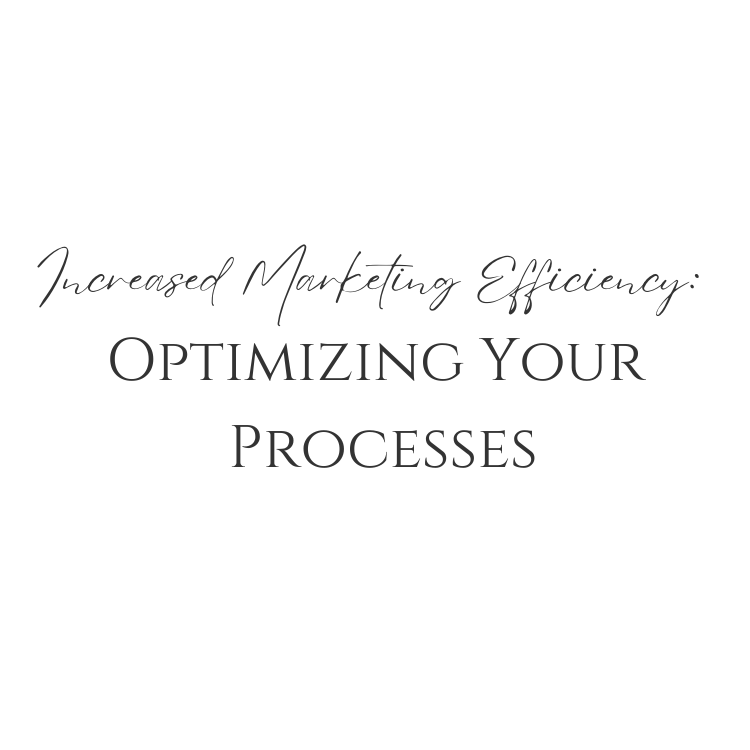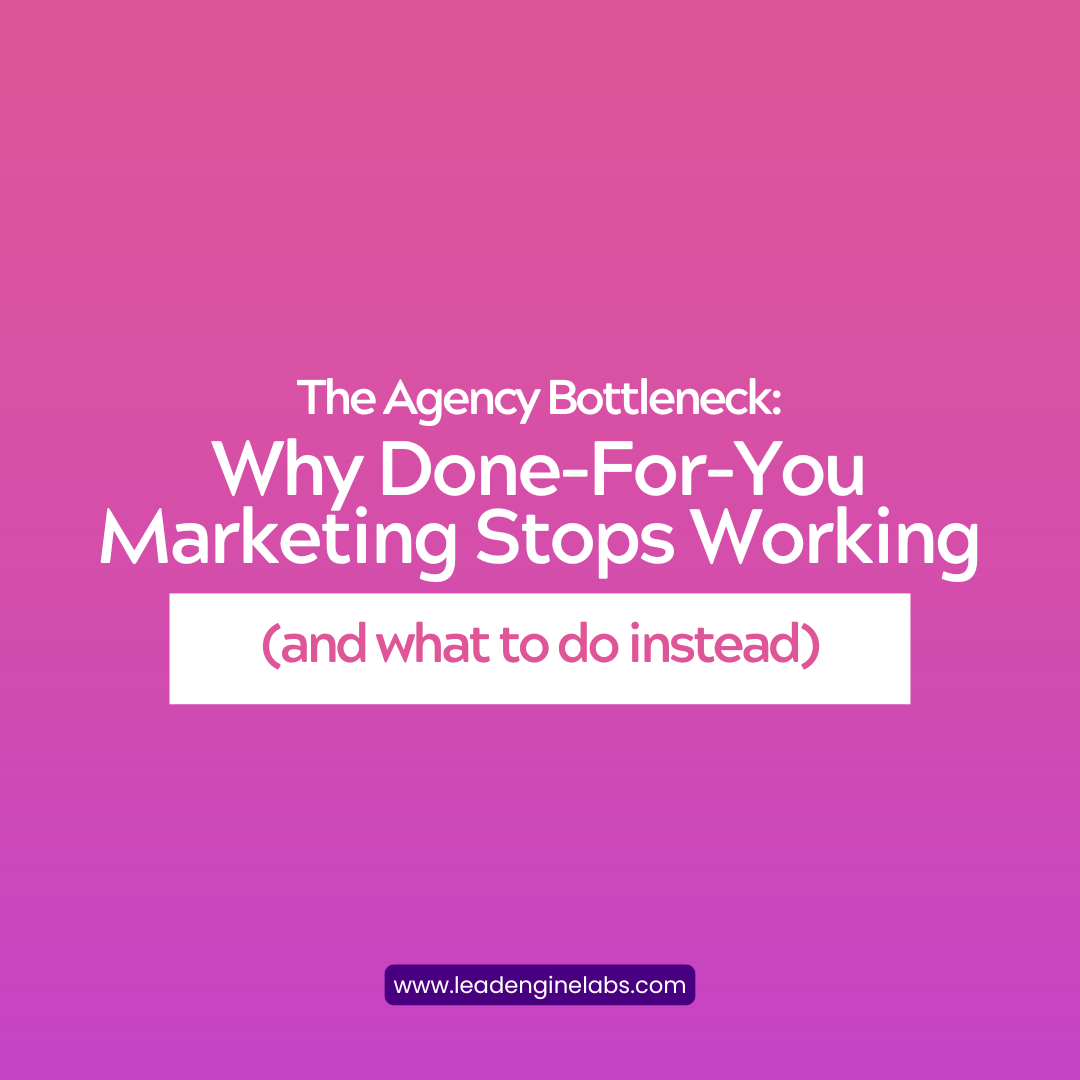If you’re looking to increase your marketing efficiency, optimizing your processes is the key. It’s not enough to simply work harder or invest more money into your marketing efforts. You need to take a strategic approach, evaluating your current processes and finding ways to streamline them for maximum effectiveness.

By doing so, you’ll be able to achieve better results with less effort and resources. Whether you’re a small business owner or part of a large marketing team, optimizing your processes can help you stay ahead of the competition and achieve your goals faster and more efficiently.
In this article, we’ll explore some of the most effective strategies for increasing marketing efficiency through process optimization. From automating repetitive tasks to embracing data-driven decision making, we’ll show you how to transform your marketing operations for optimal success.
Key Takeaways
- Evaluate current marketing processes to identify gaps and inefficiencies, and prioritize areas for improvement based on impact on overall efficiency.
- Automate repetitive tasks using email automation tools, social media scheduling, automated reports, and chatbots.
- Outsource non-core tasks to free up internal resources for core competencies and higher-level strategic planning, and choose the right outsourcing partner based on cost-benefit analysis and relevant experience.
- Monitor and improve processes through continuous evaluation and refinement, using key performance indicators (KPIs) and encouraging team members to share ideas for process improvements.
Evaluate Your Current Marketing Processes for Improved Marketing Efficiency
Take a moment to assess how your marketing processes are performing by evaluating what’s working and what’s not. This requires process evaluation techniques that enable you to identify gaps in your current processes and understand where improvements can be made. Benchmarking best practices against industry standards is another effective way to evaluate the performance of your marketing processes.

To begin, map out each stage of your marketing cycle, from ideation to execution and measurement. Identify areas where there are bottlenecks or inefficiencies, such as long approval times or manual data entry. These bottlenecks could be contributing to delays in campaign launch or negatively impacting the quality of output.
Once you have identified these areas for improvement, prioritize them based on their impact on the overall efficiency of your marketing processes. Setting goals for each area will help keep everyone accountable and focused on achieving results.
By taking a strategic approach to optimizing your marketing processes, you can improve productivity across teams while delivering better results for clients or stakeholders.
Set Goals and Prioritize Tasks
To make the most of your time, start by identifying the goals that matter most to you and prioritize your tasks accordingly. Goal setting tips can help you stay focused on what really matters. This will help you avoid getting sidetracked by unimportant tasks and ultimately increase your marketing efficiency.

When setting goals, it’s important to be specific and measurable in order to track progress. Determine what metrics are important for each goal and set realistic timelines for achieving them.
Once your goals have been identified, prioritize your tasks based on their importance in reaching those goals. Task prioritization techniques can help ensure that the most critical items are addressed first.
By setting clear goals and prioritizing tasks, you can streamline your marketing processes and maximize efficiency. In the next section, we’ll explore how automating repetitive tasks can free up more time for strategic initiatives.
Automate Repetitive Tasks
Automate repetitive tasks to streamline your workflow and save time. With the right tools, you can simplify workflows and enhance productivity. Here are four ways to get started:
- Use email automation tools to send personalized messages to leads and customers based on their actions or behaviors.
- Schedule social media posts in advance so you don’t have to manually publish them every day.
- Set up automated reports that provide insights into your marketing metrics, such as website traffic or email open rates.
- Utilize chatbots on your website or social media channels to handle common customer inquiries and free up time for other tasks.
By automating these tasks, you’ll have more time to focus on higher-level strategic planning and execution. You’ll also reduce the risk of errors or oversights that can occur when tasks are done manually.
As you streamline your processes, it’s important to consider how communication channels can be optimized for maximum efficiency. In the next section, we’ll explore ways to streamline communication between team members and stakeholders alike.
Streamline Communication Channels
Improve your team’s collaboration and boost productivity by optimizing communication channels. In today’s fast-paced business environment, effective communication is essential for success. By streamlining communication channels, you can ensure that everyone on your team is aligned towards the same goals and working together efficiently. Collaboration tools are a great way to enhance communication within your organization.
Using collaboration tools such as Slack or Microsoft Teams can help streamline communication between team members. These platforms provide a central location for all communications, including instant messaging, file sharing, and video conferencing. Team members can easily access important information without having to dig through email threads or search through multiple folders. This not only saves time but also reduces the risk of miscommunication.
Team alignment is crucial for achieving business objectives. By using collaboration tools, you can create a more cohesive team that works towards common goals. Additionally, these tools provide transparency into each team member’s workload and progress on tasks, allowing managers to better allocate resources and track productivity. With streamlined communication channels in place, your team will be able to work more effectively towards achieving company objectives.
Transitioning from improving communication channels to outsourcing non-core tasks can be an effective strategy for optimizing your marketing processes even further. By delegating certain responsibilities to outside experts in their respective fields, you free up internal resources to focus on core competencies and higher-level strategic planning. Consider exploring outsourcing options as part of your overall marketing efficiency plan.
Outsource Non-Core Tasks
To increase marketing efficiency, you should consider outsourcing non-core tasks.
To do this effectively, you need to identify which tasks can be outsourced and choose the right outsourcing partners.
By doing so, you can focus on your core competencies and reduce costs while still maintaining high-quality work.
Identify Areas for Outsourcing to Enhance Marketing Efficiency
Outsourcing certain tasks can be a game-changer for boosting marketing efficiency. However, it is crucial to identify areas that are best suited for outsourcing. One way to do this is by conducting an internal audit of your current processes and identifying non-core tasks that take up valuable time and resources.
To help you get started, consider the following table of outsourcing best practices:
| Best Practices | Explanation |
|---|---|
| Define clear objectives | Clearly define what you want to achieve through outsourcing. This will help you select the right partner and set realistic expectations. |
| Choose the right partner | Look for a partner with relevant experience, a proven track record, and excellent references. Conduct due diligence before signing any contracts. |
| Establish communication protocols | Establishing clear lines of communication is essential to ensure that both parties are on the same page regarding timelines, deliverables, and expectations. |
| Monitor performance regularly | Regular monitoring allows you to keep track of progress, identify potential issues early on, and make necessary adjustments as needed. |
By following these best practices, you can maximize the benefits of outsourcing while minimizing risks and potential pitfalls. Once you have identified areas for outsourcing and established best practices within your organization, it’s time to choose the right partners who will help take your marketing efforts to new heights without breaking your budget or compromising quality.
Transitioning smoothly into choosing the right partners requires careful consideration beyond just finding those with relevant experience or excellent references; it also involves establishing clear expectations about timelines and deliverables upfront so that both parties are satisfied with their arrangement from start-to-finish!
Choose the Right Outsourcing Partners
Choosing the right outsourcing partners is like finding the perfect puzzle piece that fits seamlessly into your marketing strategy. Partner selection is a crucial step in optimizing your processes and increasing marketing efficiency.
It involves identifying potential partners, conducting cost benefit analysis, and evaluating their capabilities to ensure they align with your business goals.
When selecting an outsourcing partner, it’s important to consider factors such as expertise, reliability, and communication skills. Look for a partner who has experience in your industry and can provide the specific services you need.
Additionally, establish clear communication channels to ensure effective collaboration throughout the partnership. By choosing the right outsourcing partners, you can streamline your marketing processes and focus on other aspects of growing your business.
In order to further improve your marketing efficiency, it’s important to embrace data-driven decision making. By analyzing data from various sources such as customer behavior and market trends, you can make informed decisions that will optimize performance and drive results.
Embrace Data-Driven Decision Making
You can harness the power of data to make informed decisions that will propel your marketing efforts forward, visualizing success as you analyze and optimize your strategies. By using data visualization techniques, you can turn complex datasets into easily digestible and actionable insights. With predictive analytics tools, you can anticipate future trends and adjust your campaigns accordingly.
To fully embrace data-driven decision making, it’s important to gather as much relevant information as possible. This means not only analyzing your own marketing metrics but also keeping an eye on industry trends and consumer behavior. By doing so, you can identify potential opportunities or threats before they become apparent and adjust your strategy accordingly.
Remember that data is only one piece of the puzzle. It’s important to balance quantitative analysis with qualitative insights from customer feedback, market research, and other sources. By combining both types of information in a strategic way, you’ll be able to optimize your marketing processes for maximum efficiency and effectiveness.
As you continue to fine-tune your approach, investing in employee training and development will help ensure that everyone on your team is equipped with the skills they need to succeed in this constantly evolving landscape.
Invest in Employee Training and Development
Investing in employee training and development is like planting seeds in a garden – with the right care and attention, they’ll grow and yield a bountiful harvest of success for your business. By providing personalized coaching to team members, you can help them identify areas where they could improve their skills. This not only helps them become more proficient at their jobs but also boosts their confidence by showing them that you value their growth and development.
Skill enhancement is another key aspect of investing in employee training and development. As technology continues to evolve, new tools and techniques are constantly being introduced into the workplace. By offering ongoing training opportunities, you can ensure that your team stays up-to-date on the latest trends and best practices in your industry. This not only helps them perform better on a day-to-day basis but also positions your organization as an innovative leader within your market.
As you continue to invest in your employees’ growth and development, it’s important to continuously monitor and improve processes to ensure that these efforts are yielding positive results for both individuals and the company as a whole. By regularly assessing performance metrics such as employee engagement levels or productivity rates, you can identify areas where additional training or support may be needed.
With this approach, you’ll be well-equipped to adapt quickly to changing circumstances while continuing to foster an environment of continuous learning and improvement.
Continuously Monitor and Improve Processes
To ensure that your team is always performing at their best, it’s vital to constantly evaluate and refine the way your business operates. One of the ways to do this is through process optimization, which involves continuous improvement and monitoring.
This means regularly assessing your processes to identify areas where they can be streamlined or made more efficient. Continuous improvement requires tracking progress and success over time. By keeping track of key performance indicators (KPIs), you can monitor how well your processes are working and identify areas for improvement.
For example, if you notice that a certain process consistently takes longer than expected or leads to errors, it may be time to make some changes. Monitoring and improving your processes isn’t a one-time project; it’s an ongoing effort that should become part of your company culture.
Encourage all members of your team to share ideas for process improvements, no matter how small they may seem. When everyone is invested in making things better, you’ll see results faster and enjoy greater success overall. Remember: optimizing your processes isn’t just about saving time or money, it’s about creating a foundation for innovation and growth in the long term.
Frequently Asked Questions
How can I effectively measure the ROI of my marketing processes?
Did you know that 70% of companies struggle to measure the effectiveness of their marketing? To effectively measure ROI, track all costs and revenue generated from campaigns. Use tools like Google Analytics for data analysis.
What are some common mistakes businesses make when trying to streamline communication channels?
Improving communication and minimizing redundancy are key to streamlining channels. Common mistakes include lack of clarity in messaging, using too many platforms, and not having a clear hierarchy for decision-making. Keep it simple and organized.
What are some examples of non-core tasks that can be outsourced in marketing?
Outsourcing non-core tasks in marketing can provide benefits such as cost savings and access to specialized expertise. Conducting a cost analysis can help identify areas where outsourcing makes sense, allowing you to focus on core business functions for increased efficiency.
How can I ensure that my employees are staying up-to-date with the latest marketing trends and technologies?
Did you know that 55% of employees feel they lack the skills needed to keep up with industry changes? Ensure your team stays current by investing in employee training and sending them to industry conferences.
What are some common challenges that businesses face when trying to implement data-driven decision making in their marketing processes?
Implementing data-driven decision making in marketing processes can be challenging. Understanding analytics and implementing automation are common obstacles. To overcome them, invest in training and technology, establish clear goals, and continually evaluate performance to improve results.
Conclusion
Congratulations! You’ve made it to the end of this article on optimizing your marketing processes. By now, you should have a clear understanding of how to evaluate and improve your current marketing practices.
But let’s be honest, sometimes the thought of overhauling your entire process can seem daunting. It’s like trying to build a ship while sailing it at the same time.
However, think of it this way: optimizing your marketing efficiency is like tuning up a car. Just like a well-tuned engine can make all the difference in speed and performance, streamlining your processes can lead to increased productivity and ultimately drive more revenue for your business.
Don’t let fear hold you back from improving your marketing efforts. Remember that every step towards optimization counts and small changes can lead to big results over time.
So take action today by evaluating your current processes, setting goals, automating tasks, streamlining communication channels, outsourcing non-core tasks, embracing data-driven decision making, investing in employee training and development, and continuously monitoring and improving your processes.
Your journey towards increased marketing efficiency starts now!




